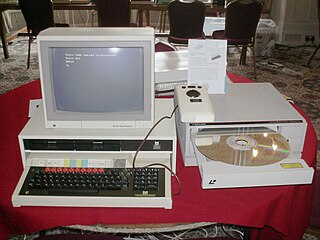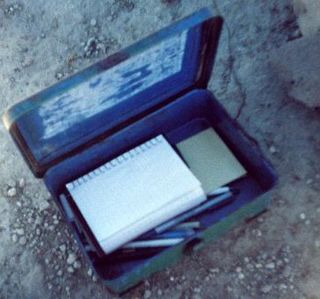 W
WDARPA Shredder Challenge 2011 was a prize competition for exploring methods to reconstruct documents shredded by a variety of paper shredding techniques. The aim of the challenge was to "assess potential capabilities that could be used by the U.S. warfighters operating in war zones, but might also identify vulnerabilities to sensitive information that is protected by shredding practices throughout the U.S. national security community". The competition was sponsored by the Defense Advanced Research Projects Agency (DARPA), a research organization of the United States Department of Defense. Congress authorized DARPA to award cash prizes to further DARPA’s mission to sponsor revolutionary, high-payoff research that bridges the gap between fundamental discoveries and their use for national security.
 W
WDigital obsolescence is a situation where a digital resource is no longer readable because of its archaic format. There are two main categories of digital obsolescence:Software: the software needed to access the digital file becomes obsolete. An example here would be WordStar, a word processor popular in the 1980s which used a closed data format. WordStar is no longer readily available and modern machines are not configured to read data in this format. Hardware: the hardware needed to access the digital file becomes obsolete and thus no longer available. One example is the floppy disk and floppy disk drive; the disks are no longer commercially available and modern computers no longer have the drives to read them built in as standard.
 W
WDiscovery, in the law of common law jurisdictions, is a pre-trial procedure in a lawsuit in which each party, through the law of civil procedure, can obtain evidence from the other party or parties by means of discovery devices such as interrogatories, requests for production of documents, requests for admissions and depositions. Discovery can be obtained from non-parties using subpoenas. When a discovery request is objected to, the requesting party may seek the assistance of the court by filing a motion to compel discovery.
 W
WA dive log is a record of the diving history of an underwater diver. The log may either be in a book, locally hosted software, or web based. The log serves purposes both related to safety and personal records. Information in a log may contain the date, time and location, the profile of the dive, equipment used, air usage, above and below water conditions, including temperature, current, wind and waves, general comments, and verification by the buddy, instructor or supervisor.
 W
WThe Dublin Core, also known as the Dublin Core Metadata Element Set, is a set of fifteen "core" elements (properties) for describing resources. This fifteen-element Dublin Core has been formally standardized as ISO 15836, ANSI/NISO Z39.85, and IETF RFC 5013. The core properties are part of a larger set of DCMI Metadata Terms. "Dublin Core" is also used as an adjective for Dublin Core metadata, a style of metadata that draws on multiple RDF vocabularies, packaged and constrained in Dublin Core application profiles.
 W
WEmmett Joseph Leahy was an American archivist and entrepreneur. He was a pioneer in the discipline of records management. After working in the National Archives and then during World War II in the United States Navy, he entered private business as a consultant in records management and as a records storage provider. He also participated in the two Hoover Commissions in improving the efficiency and effectiveness of government.
 W
WA filename or file name is a name used to uniquely identify a computer file stored in a file system. Different file systems impose different restrictions on filename lengths and the allowed characters within filenames.
 W
WAn image scanner—often abbreviated to just scanner, is a device that optically scans images, printed text, handwriting or an object and converts it to a digital image. Commonly used in offices are variations of the desktop flatbed scanner where the document is placed on a glass window for scanning. Hand-held scanners, where the device is moved by hand, have evolved from text scanning "wands" to 3D scanners used for industrial design, reverse engineering, test and measurement, orthotics, gaming and other applications. Mechanically driven scanners that move the document are typically used for large-format documents, where a flatbed design would be impractical.
 W
WThe League of Nations archives is a collection of the historical records and official documents of the League of Nations. The collection is housed at the United Nations Office at Geneva (UNOG), where it is managed by the Institutional Memory Section (IMS) of the UN Library & Archives Geneva. It consists of approximately 15 million pages of content and comprises nearly 3 linear kilometers. The League of Nations archives' historical significance is recognized by UNESCO, with its inscription on the Memory of the World Register in 2009.
 W
WA logbook is a record of important events in the management, operation, and navigation of a ship. It is essential to traditional navigation, and must be filled in at least daily.
 W
WThe Staatsarchiv Ludwigsburg, located in Ludwigsburg, Germany, is a public institutional repository for roughly 680 state authorities within the District of Stuttgart, Germany.
 W
WMetadata is "data that provides information about other data". In other words, it is "data about data". Many distinct types of metadata exist, including descriptive metadata, structural metadata, administrative metadata, reference metadata and statistical metadata.Descriptive metadata is descriptive information about a resource. It is used for discovery and identification. It includes elements such as title, abstract, author, and keywords. Structural metadata is metadata about containers of data and indicates how compound objects are put together, for example, how pages are ordered to form chapters. It describes the types, versions, relationships and other characteristics of digital materials. Administrative metadata is information to help manage a resource, like resource type, permissions, and when and how it was created. Reference metadata is information about the contents and quality of statistical data. Statistical metadata, also called process data, may describe processes that collect, process, or produce statistical data.
 W
WThe National Archives and Records Administration (NARA) is an independent agency of the United States government charged with the preservation and documentation of government and historical records. It is also tasked with increasing public access to those documents which make up the National Archive. NARA is officially responsible for maintaining and publishing the legally authentic and authoritative copies of acts of Congress, presidential directives, and federal regulations. NARA also transmits votes of the Electoral College to Congress.
 W
WThe records continuum model (RCM) is an abstract conceptual model that helps to understand and explore recordkeeping activities. It was created in the 1990s by Monash University academic Frank Upward with input from colleagues Sue McKemmish and Livia Iacovino as a response to evolving discussions about the challenges of managing digital records and archives in the discipline of archival science.
 W
WRecords life-cycle in records management refers to the following stages of a records "life span": from its creation to its preservation or disposal. While various models of the records life-cycle exist, they all feature creation or receipt, use, and disposition.
 W
WA summit book or summit register is a record of visitors to the summit of a mountain. It is usually enclosed in a weatherproof, animalproof metal canister. Some books are maintained in an informal manner by an individual or small group, while others are maintained by a club. Well known and often climbed peaks, such as those on peak bagging lists, are more likely to have summit books. On the other hand, mountains which are very heavily climbed or have popular trails up, such as Mount Whitney or Ben Nevis, may not have registers, or may have a daily log book that is changed out often.
 W
WVital records are records of life events kept under governmental authority, including birth certificates, marriage licenses, and death certificates. In some jurisdictions, vital records may also include records of civil unions or domestic partnerships.